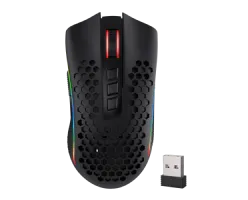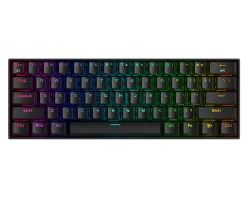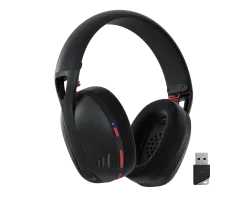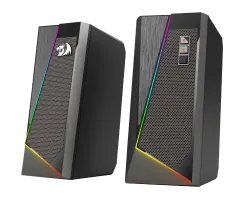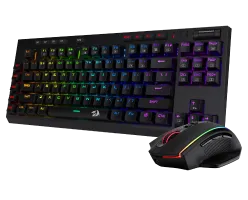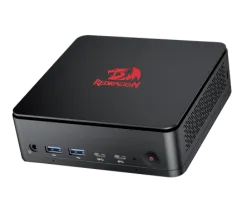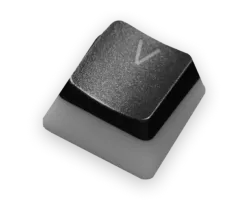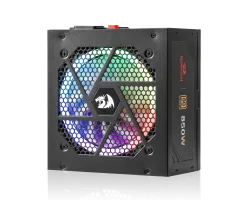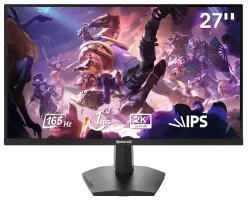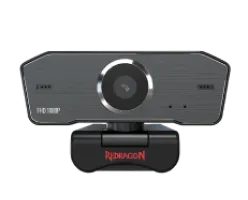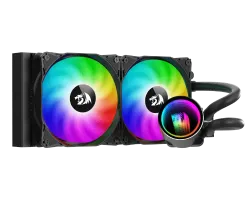Introduction

Mechanical keyboards have taken the tech world by storm, appealing not only to gamers and programmers but also to anyone who spends a lot of time typing. Over the years, keyboard enthusiasts have developed their own language to describe the feel and sound of these devices. Among terms like “thock,” “clicky,” and “clacky,” the word “creamy” has grown increasingly popular and for good reason.
A creamy keyboard offers a typing experience that feels smooth, soft, and satisfying in a way that is hard to put into words. It is not just about the sound, but the overall sensation when you press each key. If you have ever wondered what makes a keyboard creamy, why people seek that specific feel, or how you can get one yourself, this article will guide you through everything from definitions to detailed build tips.
What Exactly Is a “Creamy Keyboard”?
A creamy keyboard is one that offers a uniquely smooth and soft typing experience. It's not just about sound; it's about feel. Creamy keyboards are known for:
-
Fluid key travel with minimal scratch
-
A soft, muted sound profile
-
A “melty,” almost luxurious response per keystroke
To achieve this, enthusiasts often rely on linear switches, high-quality lube, POM switches for smoother movement, and silence mods that reduce noise and harshness.
Why Enthusiasts Crave the Creamy Experience
Creamy keyboards strike an ideal balance between comfort and performance for many users. Here’s why the creamy keyboard build has become so desirable:
-
Tactile comfort: smooth action reduces fatigue over long sessions
-
Aesthetic harmony: creamy builds often pair well with minimalist or pastel setups
-
Acoustic appeal: a clean, gentle profile that avoids both sharp clicks and heavy thock sounds
-
Personal satisfaction: building a creamy keyboard is both art and science
Creamy keyboards are all about control, refining every detail until the board feels like an extension of your hands.
Creamy vs. Thocky Keyboards: What’s the Buzz About?
While creamy keyboards focus on smoothness and softness, “thocky” keyboards highlight deep, resonant sounds and a firm keystroke. Understanding their differences helps clarify why some people prefer one over the other.

Thocky keyboards produce a more pronounced “thock” sound with firm feedback that some typists find satisfying for rhythm and accuracy. In contrast, creamy keyboards focus on delivering a smooth, effortless glide, ideal for users who appreciate a softer and more refined typing feel.
Both styles have passionate fan bases, and the best choice depends on your personal typing preferences and use cases.
Factors To Consider When Choosing a Creamy Keyboard
If you want to achieve that creamy feel, understanding the key components and modifications is crucial. Here are the most important factors:
-
Switch Type: Choosing the right switches is the first step toward a creamy build. Linear switches, known for their smooth press without tactile bumps or clicking sounds, are the go-to option. Those made with POM materials are especially valued for their naturally fluid feel. It's best to steer clear of dry or scratchy switches, as they can ruin the smooth experience you're aiming for.
-
Lubrication: Applying lubricant to switch stems and springs reduces friction and scratchiness. A thick, high-quality lubricant such as Krytox 205g0 or Tribosys 3204 is often used to create a buttery smooth keypress. Lubing is a time-intensive but rewarding step.
-
Stabilizers: Larger keys like the spacebar and enter rely on stabilizers, which can create unwanted rattle if not properly tuned. To keep the typing feel smooth and quiet, clip-in stabilizers should be securely installed, well-lubricated, and optionally enhanced with mods like the band-aid technique to reduce noise and movement.
-
Keycaps: Thicker keycaps made of PBT or ABS material can soften typing sound. Profiles like SA, Cherry, or OEM impact typing comfort and sound, so select keycaps that complement your creamy build.
-
Case and Sound Dampening: The keyboard case material and mounting style affect acoustics. Plastic cases and gasket mounts tend to absorb sound better than metal or tray mounts. Placing foam between the PCB and plate, or beneath the plate itself, can significantly lower noise levels and enhance the overall soft, cushioned feel of the keyboard.
How to Achieve Creaminess: A Step-by-Step Build Guide
If you want to build your own creamy keyboard, follow these steps for the best results. For a deeper dive into each mod, see our Mechanical Keyboard Customization Guide.
Step 1: Choose Smooth Switches
Pick factory-smooth linear switches or POM-based options with minimal scratchiness out of the box.
Step 2: Lube Your Switches and Stabilizers
Disassemble switches and stabilizers to apply lubricant carefully. This step smooths out every movement and reduces unwanted noise.
Step 3: Add Foam or Other Dampening Materials
Place foam sheets between the PCB and plate and inside the case to absorb sound vibrations.
Step 4: Select Thick, High-Quality Keycaps
Choose keycaps that improve sound absorption and provide a pleasant typing profile.
Step 5: Perform Silence Mods
Use silicone rings or other sound-absorbing materials on key stems and stabilizers to further reduce noise.
Buying vs. Building: Ready-Made Creamy Keyboards to Consider
When it comes to getting that creamy typing experience, you have two main choices: buy a ready-made keyboard or build one yourself. Both options have clear benefits, and your choice depends on how much time, customization, and effort you want to invest.
Buying a creamy keyboard:
-
Fast and hassle-free
-
Comes with factory-lubed switches and optimized components
-
Includes sound-dampening materials and improved stabilizers
-
No tools or experience needed
-
Perfect if you want to enjoy creamy typing right away
Building your own creamy keyboard:
-
Full control over every part
-
Choose your preferred switches, lubricants, and mods
-
Customize sound, feel, and aesthetics exactly how you want
-
Requires time, patience, and tools
-
Very rewarding for DIY enthusiasts
Best Redragon Keyboards for a Creamy Typing Experience
If you’re leaning towards purchasing rather than building, Redragon offers several creamy keyboards crafted to provide a buttery-smooth typing sensation straight out of the box:
-
Eclipse K720 Pro: This 96% compact wireless keyboard i that features a dedicated control knob, multiple layers of sound-dampening material, hot-swappable switch sockets, and pre-lubed Leopard L switches combined with gradient PBT keycaps. Its gasket-mounted structure further enhances the soft, creamy typing feel.
-
EISA Max K686: Offers a 96% layout with wireless connectivity and hot-swappable sockets. It includes MOA profile PBT keycaps, five noise-dampening pads, and Linear Mint Mambo switches known for their smooth and quiet performance. Together, these features create a soft and silent typing experience.
-
EISA K686 PRO SE: This 96 % (98-key) anime-themed keyboard adds tri-mode connectivity (2.4 GHz, Bluetooth, USB-C) and a smooth aluminium control knob to your setup. A gasket-mounted chassis teams up with five sound-absorbing pads, hot-swappable sockets, and custom Hi-Fi linear switches to deliver a plush, whisper-quiet keypress. Durable PBT keycaps complete the build, giving you a creamy typing feel straight out of the box while still leaving room for future switch swaps and mods.
-
Galatin Pro K719: This 95-key compact board combines a gasket-mounted frame with five layers of acoustic foam and a silicone gasket, giving every keystroke a soft, “creamy” landing. Hot-swappable sockets come pre-fitted with factory-lubed Mambo linear switches, while durable PBT keycaps keep the feel solid and oil-resistant. A tri-mode connection suite (USB-C wired, 2.4 GHz, Bluetooth) plus a 4,000 mAh battery enables cable-free flexibility, and the 1.14-inch customizable TFT screen with aluminium control knob puts lighting, media, and macros at your fingertips.、
-
EISA K686 PRO – Side-Printed PBT Edition: This 98-key, 96 % layout board arrives “cream-ready” thanks to a gasket-isolated frame, a five-layer acoustic dampening stack, and south-facing hot-swap sockets loaded with factory-lubed Leopard L linear switches. Its gradient, side-printed PBT keycaps stay matte and let the RGB underglow shine without glare, while an aluminium media knob and tri-mode connectivity (USB-C wired, 2.4 GHz, Bluetooth) add everyday convenience. Paired with a 4,000 mAh battery, the K686 PRO delivers plush, whisper-quiet keystrokes straight out of the box—yet still leaves room for future switch swaps and tweaks.
Both models use premium components, factory lubrication, and thoughtful design choices such as noise reduction and gasket mounting. This combination ensures users get that desirable creamy sound and tactile experience without needing to modify the keyboard themselves.
Conclusion
Creamy keyboards have carved out a unique niche in the mechanical keyboard community by offering a tactile and auditory experience focused on smoothness, softness, and subtle sound. Unlike louder or clickier keyboards, creamy builds provide a gentle glide that is both comfortable for extended typing sessions and soothing to the ears.
Whether you buy a ready-made creamy keyboard or build your own, understanding the key elements such as switch choice, lubrication, stabilizers, keycaps, and case soundproofing is essential to achieving that luxurious feel.
Ultimately, a creamy keyboard is more than simply a device. It becomes a personal extension of your style and preferences. If you’ve grown tired of harsh clicks and sharp sounds, exploring the creamy side might be the upgrade your setup has been waiting for.
FAQ
What does a thocky keyboard mean?
A thocky keyboard produces a deep, satisfying “thock” sound when keys are pressed, often described as more resonant and solid compared to lighter or clicky keyboards.
What is a mushy keyboard?
A mushy keyboard feels soft and unresponsive, lacking tactile feedback or a clear actuation point, which can make typing feel sluggish or unsatisfying.
Why are keyboards called creamy?
Keyboards are called creamy when they offer a smooth, buttery typing experience with minimal resistance, soft sound, and a gentle, effortless keypress.
Can you game with a creamy keyboard?
Yes, creamy keyboards can be excellent for gaming because their smooth and quiet switches allow for fast and comfortable key presses during long sessions.
Should I put foam in my keyboard?
Adding foam inside your keyboard case can help dampen noise and improve the overall sound profile, contributing to a quieter and creamier typing experience.
Are creamy keyboards linear?
Most creamy keyboards use linear switches because their smooth, bump-free action is ideal for achieving that buttery, effortless feel.





